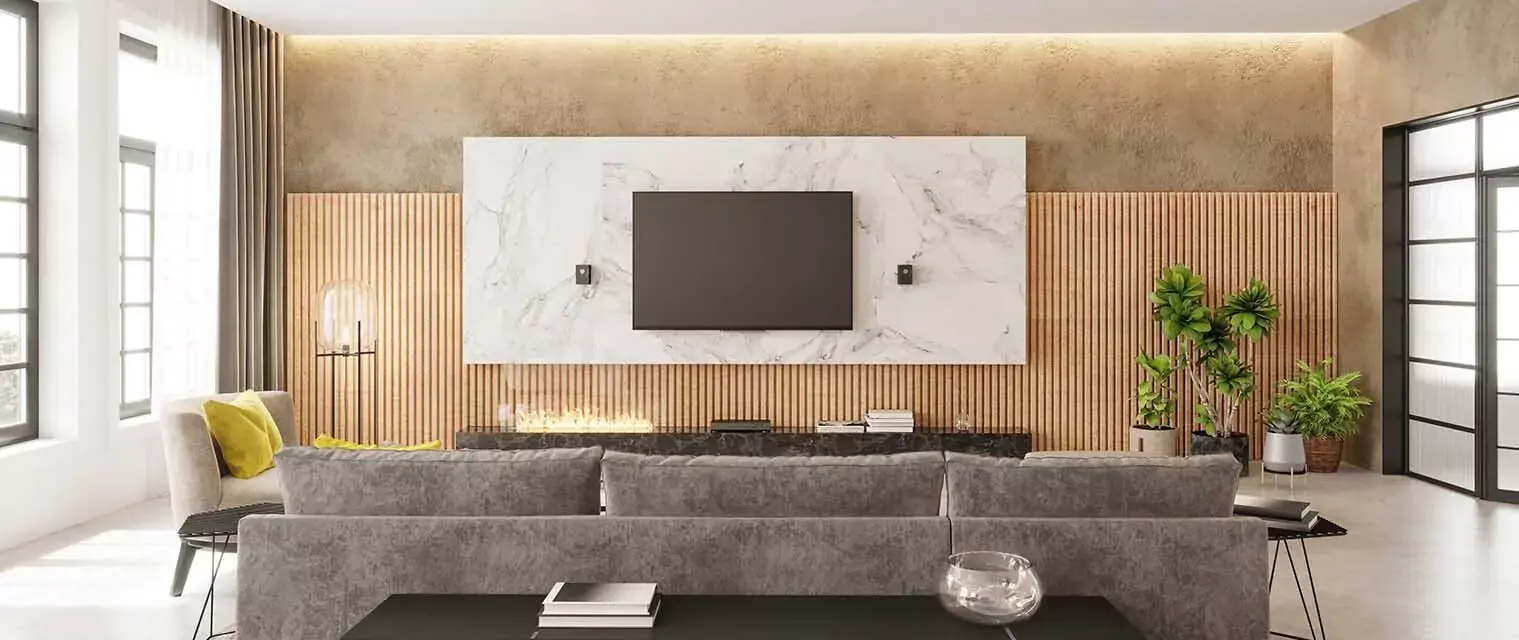An Overview of Plywood
Plywood is a widely used material in interior design and construction due to its strength, layered construction, and resistance to warping. This engineered wood is crafted by gluing together multiple thin layers (plies) of wood veneer, making it durable and reliable. It's ideal for furniture, cabinets, flooring, and wall paneling. Plywood also comes in various finishes—natural, painted, or laminated—allowing
great design flexibility. Compared to solid wood, plywood is affordable, eco-friendly, and easy to work with, making it a go-to choice for designers. When discussing plyboard vs plywood, many professionals highlight plywood’s superior strength and longevity.
An Overview of Plyboard
Plyboard (sometimes referred to as particle board or chipboard) is another popular option, especially for budget-conscious interior projects. It’s made by compressing wood particles or chips with adhesive under heat and pressure. While plyboard lacks the layered structure of plywood, it offers a smooth, uniform surface ideal for painting, laminating, or veneering. Plyboard works well for lightweight furniture,
shelves, and decorative panels. However, in the plyboard vs plywood debate, plyboard often falls behind in terms of moisture resistance and load-bearing capacity. Still, it is favored for its lower cost and versatility in low-impact areas.
What’s the Difference Between Plywood and Plyboard?
Composition and Construction:

Plywood is built from several layers of wood veneer glued together with grains running perpendicular to each other. This cross-lamination technique increases its strength and stability.
In contrast, plyboard is made from compressed wood chips or particles and doesn’t have a layered structure. This difference between ply and board results in significant differences in strength and performance.
Strength and Durability:

Plywood's cross-grain design makes it stronger and more durable than plyboard. It performs well in load-bearing roles and high-use areas.
Plyboard, though suitable for many non-structural uses, may sag or warp under stress or moisture exposure. So, in the durability debate, plywood wins.
Surface Finish:

Plywood typically offers a smoother surface due to its thin veneers, making it ideal for high-end finishes.
Plyboard requires more prep for smooth finishes, but can still be painted or laminated for aesthetic appeal.
Moisture Resistance:

Plywood handles moisture better thanks to stronger adhesives and its structure, making it suitable for humid environments.
Plyboard is less moisture-resistant and can swell or deteriorate over time if not sealed properly.
Weight:

Plyboard is heavier and denser due to its composition.
Plywood, while sturdy, is lighter and easier to handle, especially during installation or transport.
Cost:

One major point in the plyboard vs plywood price comparison is that plyboard is typically more economical. It’s perfect for large projects where keeping costs low is essential.
Plywood costs more but offers higher performance, justifying its price for quality-centric applications.
Environmental Impact:

Both plywood and plyboard can be eco-friendly when sourced sustainably. Plywood is generally considered greener if manufactured using responsible forestry and non-toxic adhesives.
Common Applications :
Plywood is used for everything from structural frameworks to fine furniture. Plyboard is best suited for interior partitions, budget furniture, and areas where light loads are expected. When choosing between the two, understanding the difference between ply and board is essential to make the right call.
Availability and Variety:

Both materials are available in various grades and sizes. Plywood offers more versatility in high-performance applications, whereas plyboard is typically limited to interiors.
Lifespan and Maintenance :
Plywood lasts longer with minimal maintenance.
Plyboard may need more upkeep, especially in moisture-prone settings.
Why Choose Decorpot?
At Decorpot we guide you through the decision-making process by helping you understand every crucial detail—from the difference between ply and board to the plyboard vs plywood price trade-offs. Whether you prioritize strength, style, or savings, we’ll help you pick the right material for your dream interiors. Contact us today to get expert support for your space transformation.
FAQ's
Q1. What are the 4 types of plywood?
The 4 different types of plywoods are softwood, hardwood, marine and decorative plywood.
Q2. Which plywood is the best quality?
The best quality plywood often depends on the specific requirements of the project. However, among commonly available types, hardwood plywood is generally considered to be of higher quality due to its durability, strength, and attractive appearance.
Q3. What is the use of plyboard?
Plyboard, also known as particle board or chipboard, finds widespread use in interior design and furniture manufacturing. It serves as a cost-effective alternative to solid wood or plywood. Plyboard is commonly used for constructing furniture, such as shelves, cabinets, and wardrobes. It's also utilized for interior paneling, decorative fixtures, and subflooring in construction projects.




.png)

.png)



 2026 | All Rights Reserved
2026 | All Rights Reserved